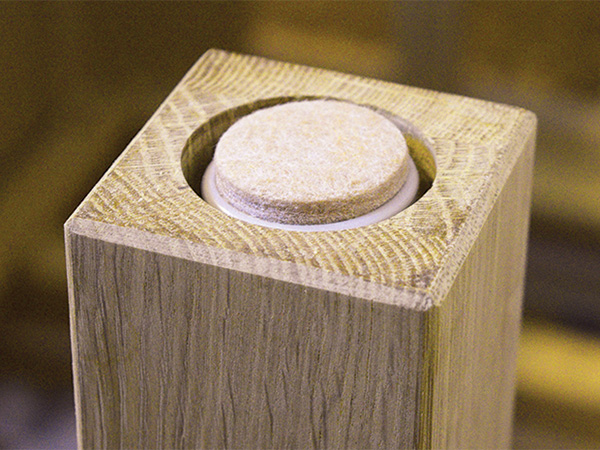On a recent dresser, I wanted to do as Packard described, but I was worried that when I needed to adjust it, the levelling foot would refuse to rotate with just finger friction available.
I couldn't find a small levelling foot that had a positive drive feature, so I made my own.
The large head bolts were nominal 15mm diameter but actually about 14.7mm OD, so my 15mm forstner bit made a perfect hole.
I drilled four small holes in the face of the screw as an anchor and then epoxied a softwood pad.
There is a hole in the pad, so I can adjust it with a 4mm allen wrench
The clearance in the 15mm hole is negligible, so even if somebody drags it across the floor, the leveller will shift a bit and not put stress on the epoxy joint.
I admit it, I am OCD and Packard's method would have worked just fine.
(But when I installed the dresser, either my work or the floor or both were out, and I indeed had to adjust one leveller and the hex drive made it very convenient)
[attachimg=1]


